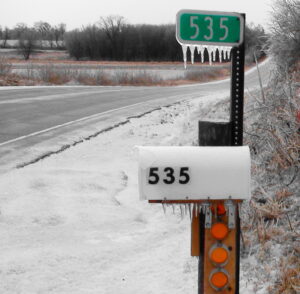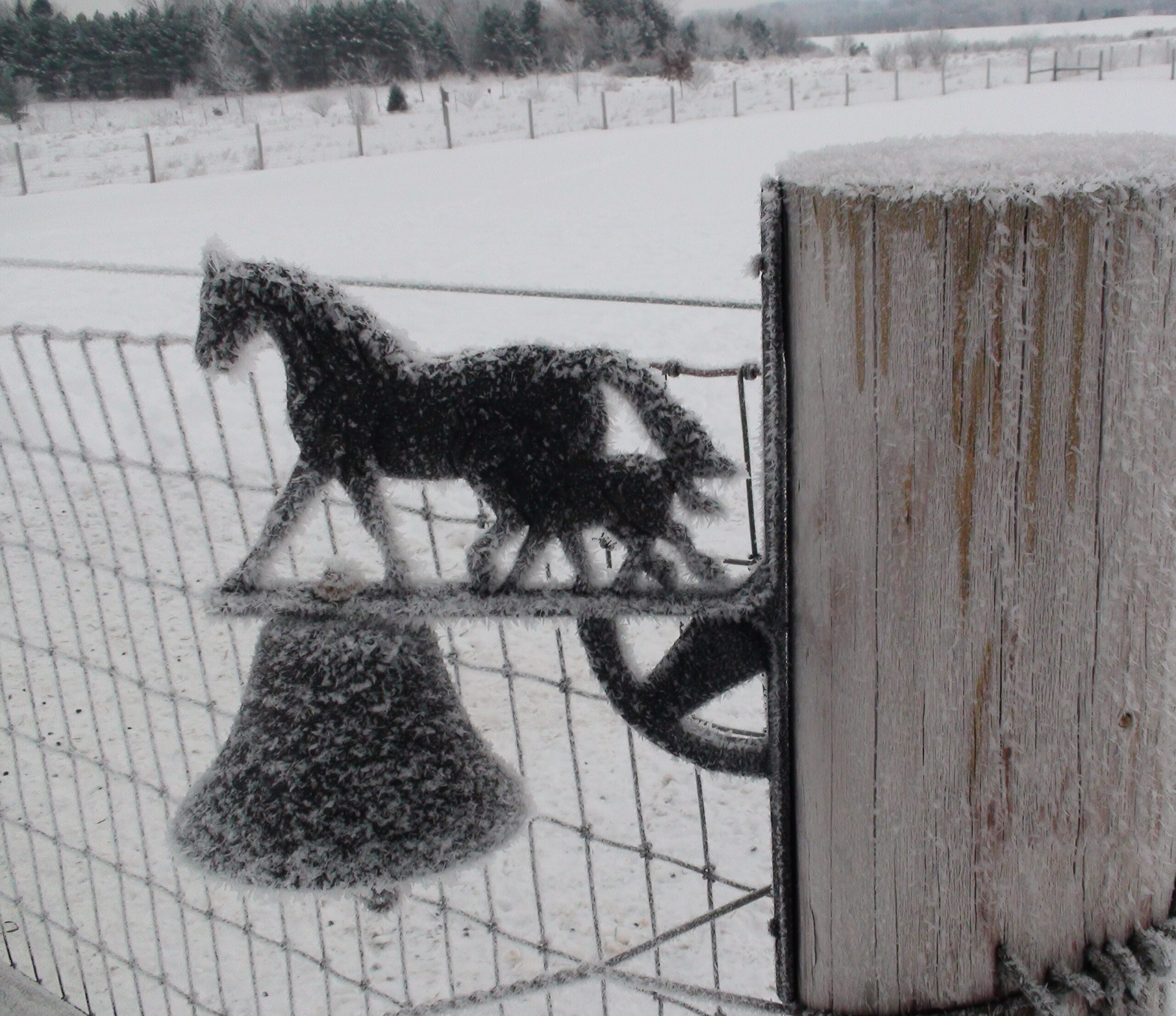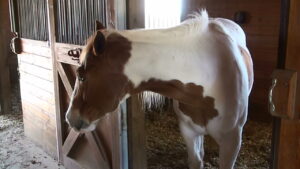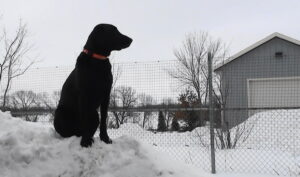Barks Blog
Icy Conditions Put People and Pets at Risk
My childhood winters were cold and snowy and I do not remember any freezing rain when I walked to school or played outside. Climate change has since warmed our region and I now find myself having to deal with winter rain, often creating unsafe icy conditions.
That makes daily animal care far riskier.

For one month last winter in southern Wisconsin (USA) we had intermittent light snow and freezing rain. My barnyard, driveway and the trails upon which I walked my dogs became dangerously slick. Just walking 100 yards up a slight grade from my house to the barn required the use of an ice pick as a walking stick. Without it I kept sliding backwards. My long driveway has three hills and even my four-wheel drive tractor with tire chains struggled up the grades.
I wondered how my horse, sheep and dogs would fare.
One of the sheep fell onto her side and could not get up, and our veterinarian warned me that three horses had fallen and were euthanized due to leg fractures. My dogs’ legs splayed out when they walked and I feared ligament injuries would occur. None of us had secure footing, and yet daily animal welfare chores had to be fulfilled.
Since I had not stockpiled any materials to cope with icy conditions I called upon local snow removal businesses. They were overwhelmed by duties to existing clients and could not help me.

My horse and sheep were virtually confined to their stalls for weeks until I could make it safer for them. They were stressed by the change in their daily routine and the unsteady footing.
I considered using salt to eliminate the ice but it can be an irritant and is ineffective below 16 degrees. Commercial mixes of calcium chloride combined with chemical deicers are more effective, but less safe for animals.
I set aside the salt option for a while and looked for alternatives. Local hardware stores had pallets full of bagged sand and pea gravel so I set about buying as much as I could. What I found were pallets covered with snow and ice, and bags frozen solid, sticking stubbornly clinging together.
With Herculean effort I wrestled several bags of sand free, and a few bags of pea gravel. It was like prying individual frozen sardines out of a can, but less smelly. After transporting the frozen bags home I had to slowly thaw them in a heated room in the barn for two days.

Meanwhile my animals remained at risk and my own stress rose.
Once thawed I spread the materials by hand and they provided good traction. The pea gravel was slippery at first, like tossing marbles onto a dance floor, but the sunlight warmed them enough so they melted slightly into the ice and created a non-slip surface. The sand was more accommodating and provided immediate traction.
On a daily basis I used my ice chipper and worked up a sweat pounding away in the cold winter wind. As the ice reluctantly broke apart I shoveled it away and very slowly my horse and sheep gained some freedom of movement, one day at a time.
I went to a local farm center seeking advice and returned home with a 50-pound bag of barn lime. The powdered lime had to be applied carefully to avoid inhaling the dust, but it provided good traction. On days when the temperature rose above 20 degrees I spread water softener salt, in the finest crystals I could find. Exposing my animals to salt was a last resort so I frequently returned to the barn throughout the day to chip away as the ice melted, shoveling it safely aside.
Four weeks later my animals could walk about a 40 x 60 foot section of the barnyard without endangering themselves. It was not ideal, but it was better than confinement to their 10 x 12 foot stalls.

As for my dogs, we skipped their daily walks and played frequent training games, food-filled puzzles and toys and trips in my car to exciting places such as the drive-through lane at the bank, where they got dog treats. Trips to the gas station were equally fun, until the temperatures were so frigid that the pumps stopped working. Then we took trips to the farm center to replenish my rapidly depleting supply of stall bedding sufficed for enrichment activities.
I scrambled to find creative ways to keep my dogs from getting cabin fever due to lack of outdoor activity.
Failure to prepare had left me in a situation of perpetual stress, so this year I prepared in advance. If you live in a region that is subject to icy conditions these tips may help you.
This winter I stockpiled several bags of sand and pea gravel in the heated (barn) tack room so they are ready to use. I put two bags of barn lime in storage along with extra bags of sand.
I also purchased several gallons of Playsafe Iceblocker, which is sprayed onto a surface to prevent ice forming in the first place. When snow is expected the product creates a one inch layer of slush at the bottom, preventing freezing. It is safer for pets than salts and deicers, according to Whole Dog Journal.
I avoid deicing salts which often contain sodium, magnesium, calcium and potassium chloride, alcohol or glycols. Pets that walk across surfaces treated with such chemicals may lick their paws, resulting in poisoning.
Even if you do not use such products, others in your neighborhood may, and public streets and parking lots are subject to heavy application. An added precaution is to wash your pet’s feet after taking them outside. Dogs may also wear winter booties which provide warmth and traction, and may then be rinsed clean after each walk.
As I typed this blog a storm blew through my region, beginning with freezing rain, which then turned to sleet and snow. I awoke to find icy conditions all around. Since the storm began as rain it diluted the Playsafe Iceblocker which I had sprayed and rendered it ineffective, but I found the stockpile of sand and barn lime was enough to make the barnyard safe. Just before I posted this I saw the latest weather forecast, heralding the arrival of another freezing rain event.
This may be a difficult winter…but with some preparation we can keep the animals in our stewardship safer.
Resources
Calamaio, C. (n.d.). Choose Nicer Deicers. ThisOldHouse.com
Fleck, D. (2020). The Dangers of Antifreeze & De-icing Salts. Pet Sitter’s World magazine
Gilpatrick, J. (2020). 7 Tips For Caring For Your Pet This Winter. PetMD.com
Kerns, N. (2019). An Ice-Prevention Product That Is Safe for Pets? WholeDogJournal.com
Murphy, S. (2018). Are “pet-friendly” ice melts really safe? Animal Wellness Magazine
PlaySafe: www.Playsafeiceblocker.com
